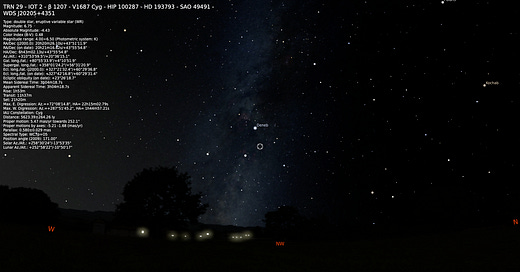JWST Reveals Dazzling Display of Raw Power, Unlocking the Dynamics of A Unique Binary Star
In death, comes new life. In the grandest example of the Cycle of Life, the death of a massive star provides the raw materials for new stars, planets and life!
We, bound by a common origin, composed of elements forged in the nuclear cauldrons of long-dead stars, look up at the stars and, in humility, connect with each other.
(James Daly, Ph.D).
WR140
During the winter months, with the highest number of bright stars visible of any season, the brilliant jewels of winter, it is fitting to consider the sage words of the late, great Carl Sagan so eloquently spoken in his Pale Blue Dot. As we look upwards towards the brilliant jewels of Orion, brilliant Sirius beckoning and know that there are others too who are gazing as we are; that this is the nexus that binds us all together, the oneness with that great canopy of stars above, fellow travelers upon this beautiful blue miracle in orbit about our home star.
Located 5,300 light years distant in the Northwest Quadrant of Cygnus is WR140.
Following Astronomical Twilight and looking to the northwest, highlighted by the blue-white star Deneb, we see Cygnus the Swan or, as it is colloquially referred to, the Northern Cross, as it sets. Cygnus is a constellation prominent during the summer months in the Northern Hemisphere and will be out of view shortly as we head into deep winter.
So, what is WR140?
WR signifies that the object is a Wolf-Rayet star, a 10-solar mass star nearing the end of its life and the brightest such star in the Northern Hemisphere. It is in a rare and particularly extraordinary evolutionary phase and one of only 600 such stars catalogued in our Milky Way galaxy.
Video of WR140 and Environs


Discovered by their distinctive spectra by French astronomers C.J. Wolf and Georges Rayet in 1867, many present without any hydrogen in their spectra and all, with broad emission lines of ionized Carbon, Nitrogen, Oxygen and Silicon. It’s highly unusual for a star to exhibit emission spectra. This happens when a gas is ionized (by ionizing radiation such as Ultra Violet light, which WR stars produce in abundance). Oxygen and Silicon are elements produced during late-stage evolution of high-mass stars.
Classic Wolf–Rayet stars have completely lost their outer hydrogen shell and are fusing helium or heavier elements in their cores. Lasting only 24 hours, Silicon burning is the last evolutionary stage in any star’s life and represents the death knell for the star.
All stars begin their lives producing energy through hydrogen fusion reactions in their cores. This process produces helium and a lot of energy. When the star’s initial complement of hydrogen has been reduced to about 12% of its original mass for stars like our sun, the star will expand to become a red giant and transition to helium burning. For stars in the mass range of the sun, the process ends here with the formation of a planetary nebula and a carbon-oxygen White Dwarf core.
How far along and how many successively heavier burning cycles a star can sustain depends on its initial mass when it formed. For the sun, the path is rather short, concluding with helium fusion and a carbon-oxygen white dwarf star. For stars greater than 10 solar masses, heavy-element nucleosynthesis continues and ultimately ends with silicon burning.
Once silicon burning begins, with the core temperature soaring above 3 billion degrees Kelvin, the supernova clock starts ticking. In the end, the endothermic property of iron prevents the newly formed iron and nickel, built up in the core and the byproducts of Silicon fusion, from producing any energy and, thus, all energy production ends with the conclusion of silicon burning and, with it, all outward support.
With nothing left to sustain outward pressure against gravitational collapse, the outer core immediately implodes at 20% the speed of light onto the newly formed and now degenerate nickel-iron core. The shockwave rebounds, propagating outward at supersonic velocities, obliterating the star in spectacular fashion as a Type II, core-collapse supernova! Depending on the original mass of the star, a neutron star or black hole will remain.
In the Grandest example of The Cycle of Life, the expanding supernova remnant will enrich the interstellar medium with the raw materials for new planets, stars, and life!
The Hottest Stars in the Universe
Keep reading with a 7-day free trial
Subscribe to Astronomy For Change Substack by James Daly, Ph.D to keep reading this post and get 7 days of free access to the full post archives.




